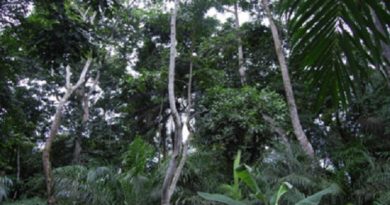At African Ministerial Summit, IPBES experts detail continent’s critical biodiversity challenges
The threat today to African plants, fish, amphibians, reptiles, birds and large mammals is unprecedented, caused by a range of both human-induced and natural causes, leading scientists warned African ministers meeting on the eve of major global biodiversity talks in Egypt.
The ministers are determining Africa’s joint position on the critical challenges of biodiversity loss ahead of the 14th meeting of the Conference of the Parties (COP 14, of the UN Convention of Biological Diversity, convened in collaboration with the Government of Egypt in Sharm el Sheikh, 14-29 November.
The expert briefing is based on two landmark Assessment Reports on the state of biodiversity in Africa, and on global land degradation and restoration, conducted under the Intergovernmental Platform on Biodiversity and Ecosystem Services (IPBES) and released earlier this year.
The Africa Assessment shows that, while there are positive examples where lessons can be learned, biodiversity and nature’s capacity to contribute to people are being degraded, reduced and lost due to a number of common pressures – habitat stress; overexploitation and unsustainable use of natural resources; air, land and water pollution; increasing numbers and impact of invasive alien species and climate change, among others.
“Africa’s human development and well-being depend on the sustainable development and use of its rich natural resources,” says Dr. Luthando Dziba, who also co-chairs the IPBES Multidisciplinary Expert Panel.
“Africa is the world’s last home for a wide range of large mammals. The scientific consensus reflected in the IPBES report, unfortunately, is that, under current scenarios to 2100, climate change could result in the loss of more than half of African bird and mammal species, a 20-30% decline in the productivity of Africa’s lakes and significant loss of African plant species.”
The IPBES Africa Report shows an estimated 20 per cent of Africa’s land surface (6.6 million km2) is estimated to be degraded because of soil erosion, salinization, pollution and loss of vegetation or soil fertility. Even greater pressure will be placed on the continent’s biodiversity as the current African population of 1.25 billion people is set to double to 2.5 billion by 2050.
“The degradation of the Earth’s land surface, through human activities, is pushing the planet towards a sixth mass species extinction,” says Prof. Robert Scholes, who co-chaired the IPBES Land Degradation Assessment.
“Less than 25% of our planet’s land surface has escaped substantial impacts of human activity – and by 2050 this is likely to be less than 10%. The combination of land degradation and climate change is predicted to reduce global crop yields by an average of 10%, and by 50% in some regions. Most future degradation will occur in Central and South America, sub-Saharan Africa and Asia.”
Prof. Scholes adds however, that we know how to successfully restore land in every ecosystem, and that avoiding or reversing degradation is possible. “Higher employment and the other benefits of land restoration often far exceed the costs involved. For regions like Asia and Africa, the cost of inaction in the face of land degradation is at least three times higher than the cost of action.”




